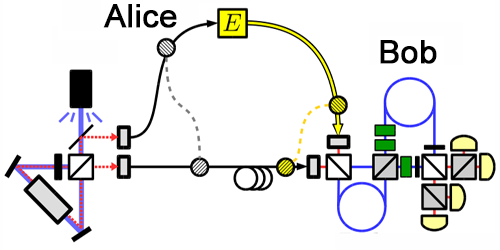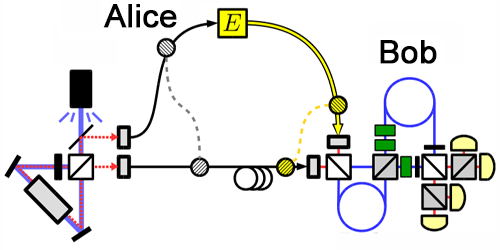Superdense Coding over Optical Fiber
Sending quantum bits can potentially be twice as efficient as sending classical bits. But realizing this so-called superdense coding has been a major challenge. Brian Williams and colleagues from Oak Ridge National Laboratory, Tennessee, have sent quantum bits over a small fiber link, achieving a new record in bit density. Their technique utilizes the hyperentanglement of photon pairs—a combined entanglement in their polarization and time degrees of freedom.
Suppose Alice wants to send a two-bit message to Bob. She could send two photons with the message encoded in their polarizations. Or, using superdense coding, she could send one polarized photon qubit whose polarization state encodes both bits. The latter option requires that the two parties initially share a pair of photons with entangled polarization. Alice performs one of four operations on her photon and then sends it to Bob, who combines it with his photon to measure which operation Alice performed.
If Bob simply measures polarization, then he won’t recover the full message. One solution is to entangle the photons in some additional degree of freedom, such as orbital angular momentum. But so far, these hyperentangled states have been unable to survive transmission through optical fibers. Williams and his colleagues have devised a superdense coding system that is fiber compliant. In this case, Alice and Bob’s photons pass through an interferometer whose arms incorporate time delays that entangle the arrival times of the photons at the detectors. Using polarization and arrival-time measurements, Bob can recover Alice’s message at a density of 1.67 bits per qubit. This is not yet the maximum density of 2, but it sets a new record for a system using single photons and linear optics.
This research is published in Physical Review Letters.
–Michael Schirber
Michael Schirber is a Corresponding Editor for Physics based in Lyon, France.





